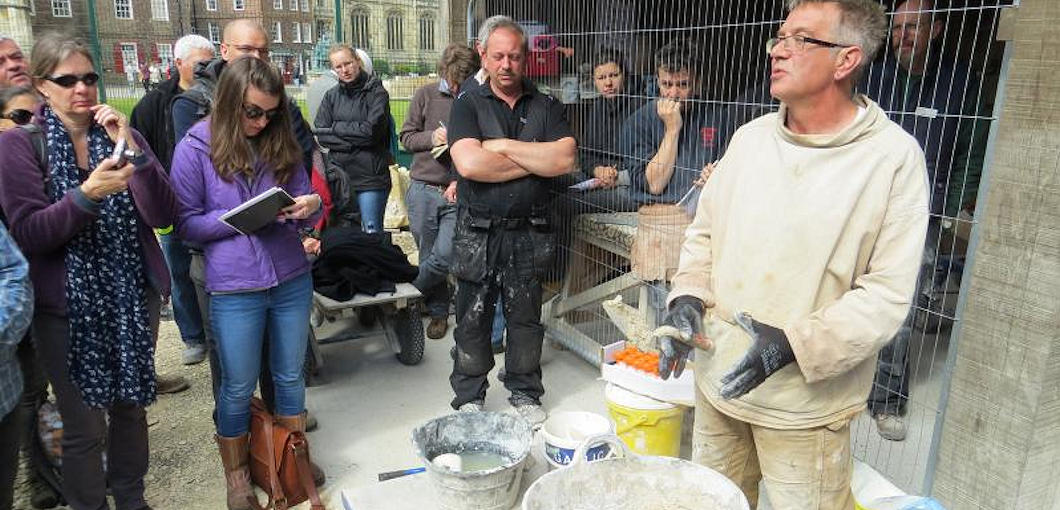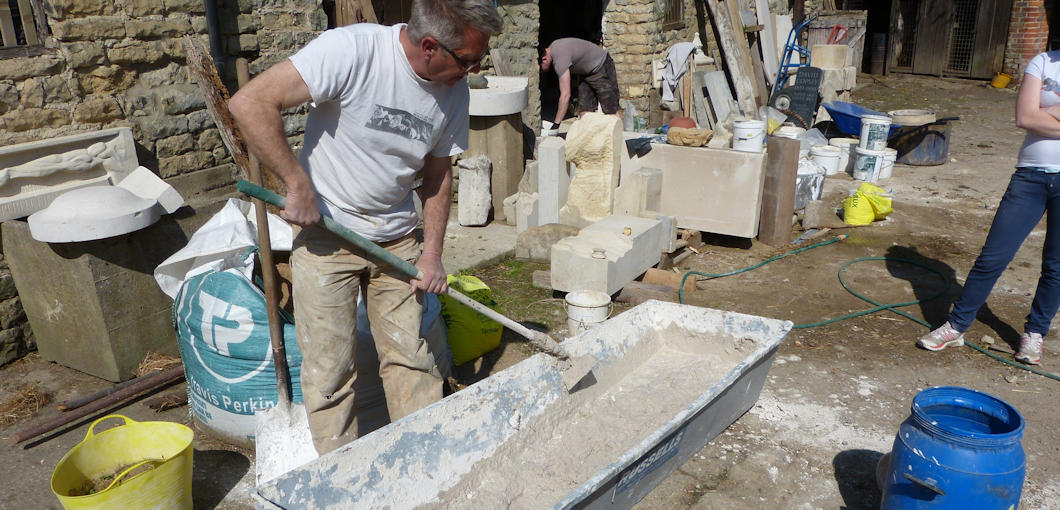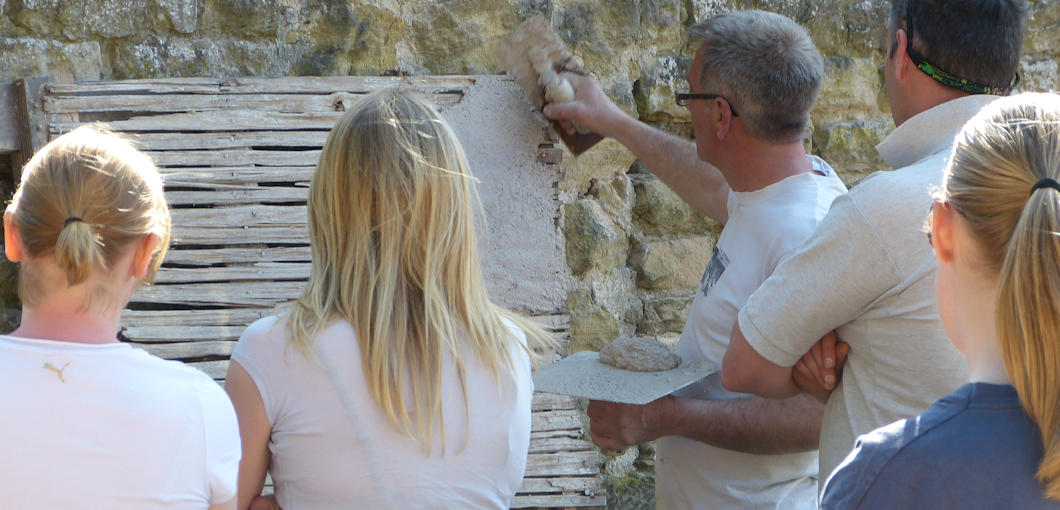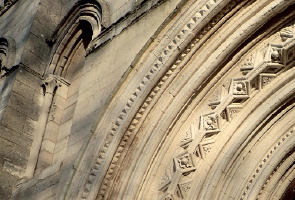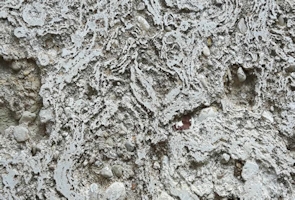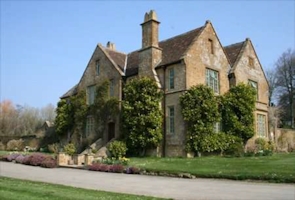Welcome to the HotMixedMortars.com website.
Please view the contents of this website to gain an insight into hot mixed mortars and related work.
Hot mixed air lime mortars, with or without small volumes of pozzolanic addition, were the ubiquitous lime mortar of traditional construction around the world, only falling from general use as the 20thC wore on, when the use of Portland cement or hybrid Portland cement and industrially produced dry hydrated air lime mortars displaced them from most building sites. This shift coincided with the growing disempowerment of masons and other crafts in the industry. Previously, mortar design had been the domain of the craftsmen, and wherever they were in the world, they chose to use hot mixed air lime mortars.
These mortars were the most economically made; they were quickly and efficiently prepared (by a variety of simple methods) and delivered mortars of eminent workability and usefulness. They enjoyed unparalleled water retentivity and excellent bond, and displayed maximum cohesiveness and adhesiveness.
All of these properties were shared with traditional earth-lime mortars, a mortar of similar ubiquity, which had dominated masonry construction throughout Europe and the Middle East before the 18thC and which were still commonly used for bedding mortars and base-coat plasters across the Americas even into the 20thC. Hot mixed lime and traditionally slaked lime putties were always used in conjunction with these.
Hot mixed air lime mortars, with suitable pozzolanic addition according to purpose, are eminently breathable – they have a vapour permeability more than twice that of a typical NHL mortar; they are much more effectively porous than other mortars and keep building fabric dry. They are durable and frost resilient in a properly detailed traditional building and are easy to prepare and deploy.
Hot mixed lime mortars are truly like-for-like and are compatible with all traditional fabric in ways that modern Natural Hydraulic Lime simply is not. Natural Hydraulic Limes were not much used for building in the air before the later 19thC – they were used, if at all, for water and underground works and for concretes. They were not available in North America unless imported from Europe, although natural cement was produced and was used for similarly wet situations, or as a gauge to otherwise hot mixed mortars in thick-walled military construction during the 19thC.
Hot Mixed Mortars and "The Lime Revival"
The "Lime Revival", which began in the UK in the 1970s, misinterpreted much traditional practice, and failed to identify the ubiquity of hot mixing, preferring instead, lime putty – a material little used and distrusted as a binder in the past, with very specific uses on its own, as a mortar – and then NHL, when over-lean lime putty mortars revealed themselves too sacrificial. Hot mixing was substantially ignored or dismissed as an option due primarily to ill-conceived assertions of danger and a failure to understand the essential simplicity and efficiency of hot mixing, as well as its ubiquity.
Beginning in 2014, a group of mainly stonemasons, but with some engineers, surveyors and material scientists from Scotland, England and Ireland – all of whom had been using hot mixes for some years – and amidst growing evidence that NHLs were not, after all, the compatible or appropriate conservation materials they had been claimed to be, and which were unpleasant to use and problematic in use above ground, began to promote the credentials and historic ubiquity of hot mixing and to advertise their virtues. Since then, some 4000 building conservation practitioners and professionals have attended events such as that planned in Wayne County, drawing on their own on-going research and experience but also, increasingly, upon research by Historic England and Historic Scotland prompted by their own and the hot-mixers' concerns. This research has only reinforced the essential truth of the hot mixing position and both heritage bodies have now rejected NHLs for most building conservation applications in favour of an insistence upon truly like-for-like and authentic repair mortars – of both hot mixed air lime and traditional earth-lime mortars.
Hot mixed lime mortars are once more being used extensively across the UK and Ireland, as well as in Scandinavia and, increasingly, elsewhere in Europe. A number of hot mixed lime mortar repair projects have been executed in western Canada and, here and there, in the USA, by individuals in tune with events in the UK and Ireland – in California and Ohio. The Carnegie Library in Calgary has just been repointed and conserved with a mildly pozzolanic hot mixed air lime mortar, confounding the notion that such mortars will not work in very cold climates and confounding the later 20thC orthodoxy that hard, fast-setting and little effectively porous mortars protect – rather than compromise – traditional masonry, earth or timber structures.
In the UK in 1811, there were around 2 million existing dwellings, the predominant mortars of most would have been earth-lime and hot mixed lime mortars. By 1911, around 6 million new dwellings had been built, as well as a multitude of civic buildings, military buildings, factories, mills and more. The vast majority of these were built using hot mixed pure or nearly pure, air or feebly hydraulic limes.
The traditional architecture of the USA, as well as some of its earlier modern architecture, was built using hot mixed air lime mortars – they are ubiquitous in the north American landscape. The majority have endured and are often in as good a condition as they were when laid. Chicago was re-built after 1886 with these mortars and their routine use in the city continued well into the 20thC.

